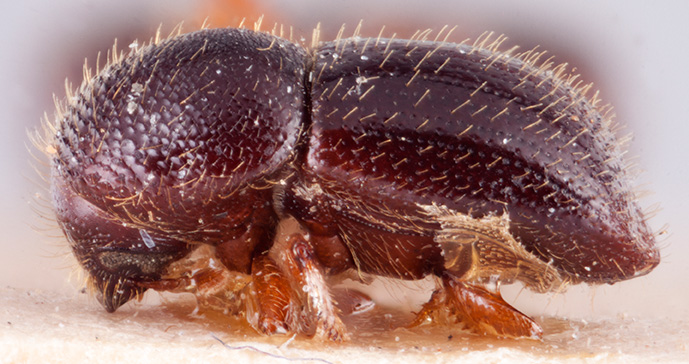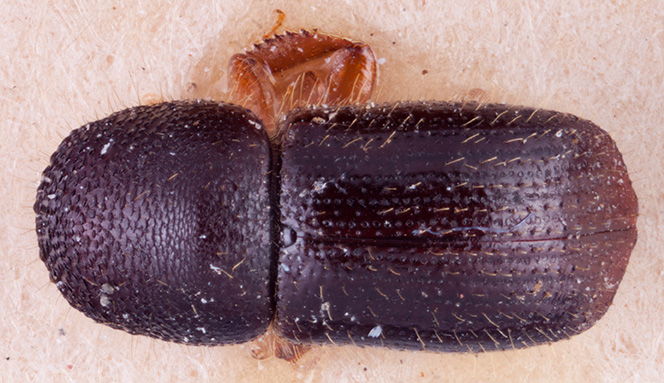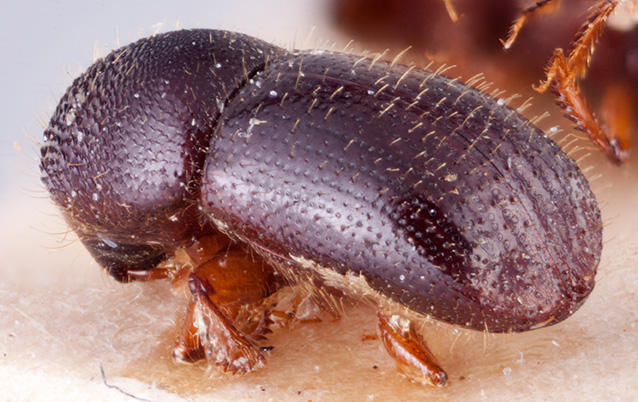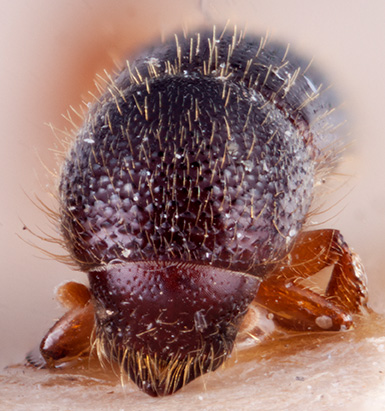Ambrosiodmus brunneipes
|
Ambrosiodmus brunneipes lateral; R.K. Osborn |
|
Ambrosiodmus brunneipes dorsal; R.K. Osborn |
|
Ambrosiodmus brunneipes declivity; R.K. Osborn |
|
Ambrosiodmus brunneipes frontal; R.K. Osborn |
Taxonomic history
Xyleborus brunneipes Eggers, 1940: 138.
Ambrosiodmus brunneipes (Eggers): Wood and Bright, 1992: 671.
Diagnosis
3.2−3.4 mm long (mean = 3.38 mm; n = 5); 2.43−2.5 times as long as wide. This species can be distinguished by the elytralelytral:
pertaining to the elytra
declivitaldeclivital:
pertaining to the elytral declivity
interstriae with uniformly sized and spaced granulesgranule:
a small rounded protuberance, like grains of sand
 from basebase:
from basebase:
point or edge closest to the body; opposite of apex to declivitaldeclivital:
to declivitaldeclivital:
pertaining to the elytral declivity
midpoint; apicalapex:
point or edge furthest from the body; opposite of base
 half of interstriaeinterstria:
half of interstriaeinterstria:
longitudinal spaces along the elytra between the striae, which is not as<br />
impressed and bear smaller punctures.
 with granulesgranule:
with granulesgranule:
a small rounded protuberance, like grains of sand
 irregularly spaced; declivitaldeclivital:
irregularly spaced; declivitaldeclivital:
pertaining to the elytral declivity
interstriae slightly elevated and bearing thick, erecterect:
pertaining to setae that have their apices directed away from the body and appear straight
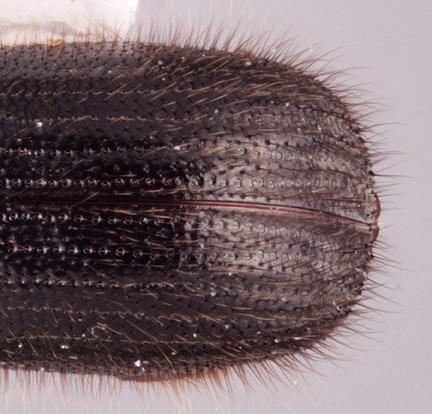 setae, setaeseta:
setae, setaeseta:
small hair-like or scale-like structure
located ventrad of granules; declivitaldeclivital:
pertaining to the elytral declivity
surface strongly shagreenedshagreened:
covered with a closely-set roughness, like shark skin 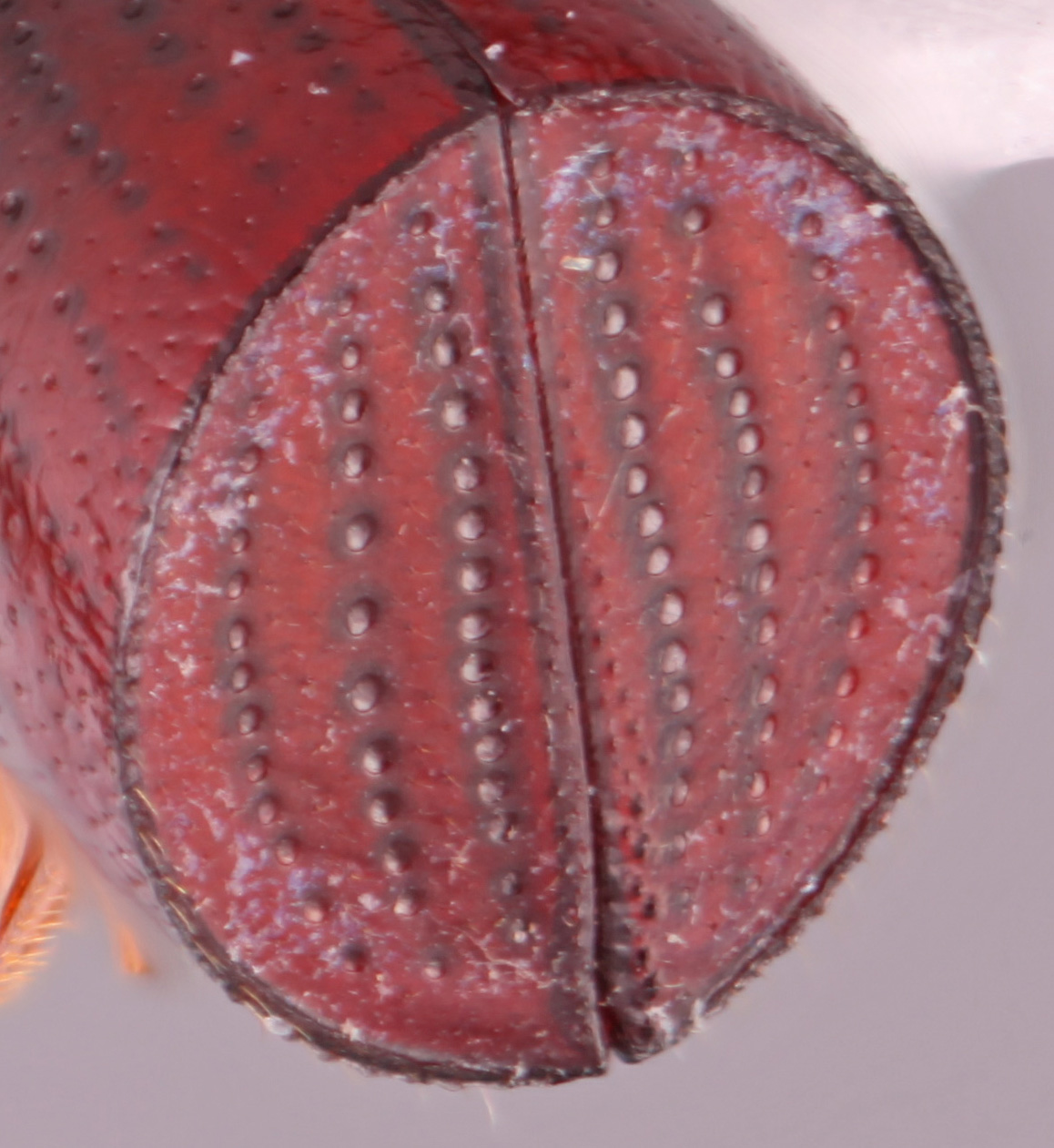 ; and dark brown color.
; and dark brown color.
This species is very similar to A. conspectus and can be distinguished by the larger size and 5−6 granulesgranule:
a small rounded protuberance, like grains of sand
 on the apicalapex:
on the apicalapex:
point or edge furthest from the body; opposite of base
 half of declivitaldeclivital:
half of declivitaldeclivital:
pertaining to the elytral declivity
interstriae 1.
May be confused with
Ambrosiodmus conspectus and A. rubricollis
Distribution
Indonesia (Java), East & West Malaysia, Thailand
Host plants
Recorded from Octomeles (Datiscaceae), Parartocarpus (Moraceae) and rattans (Arecacae). Probably polyphagous (Beaver et al. 2014Beaver et al. 2014:
Beaver RA, Sittichaya W, Liu L-Y. 2014. A synopsis of the scolytine ambrosia beetles of Thailand (Coleoptera: Curculionidae: Scolytinae). Zootaxa 3875: 1-82. http://dx.doi.org/10.11646/zootaxa.3875.1.1).
DNA data
specimens not available for sequencing

